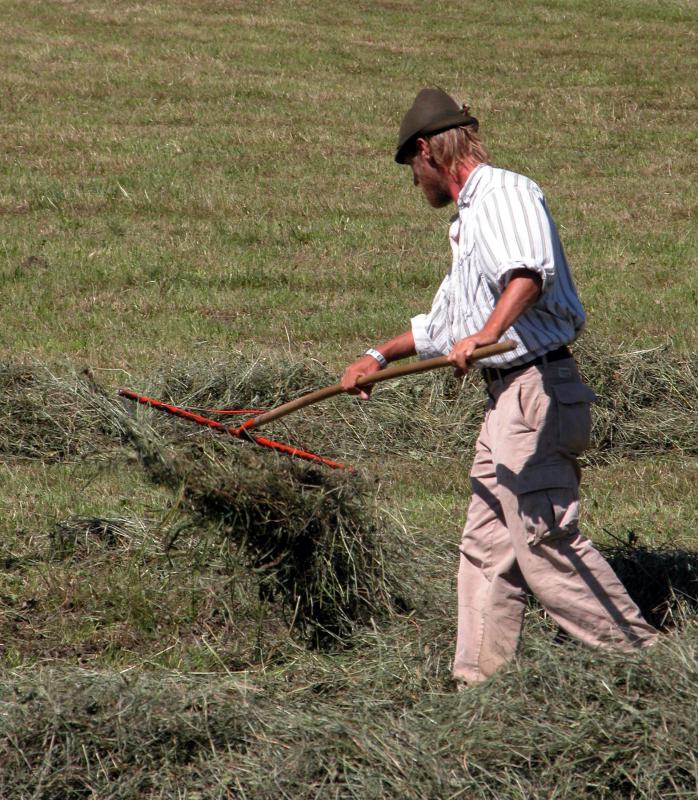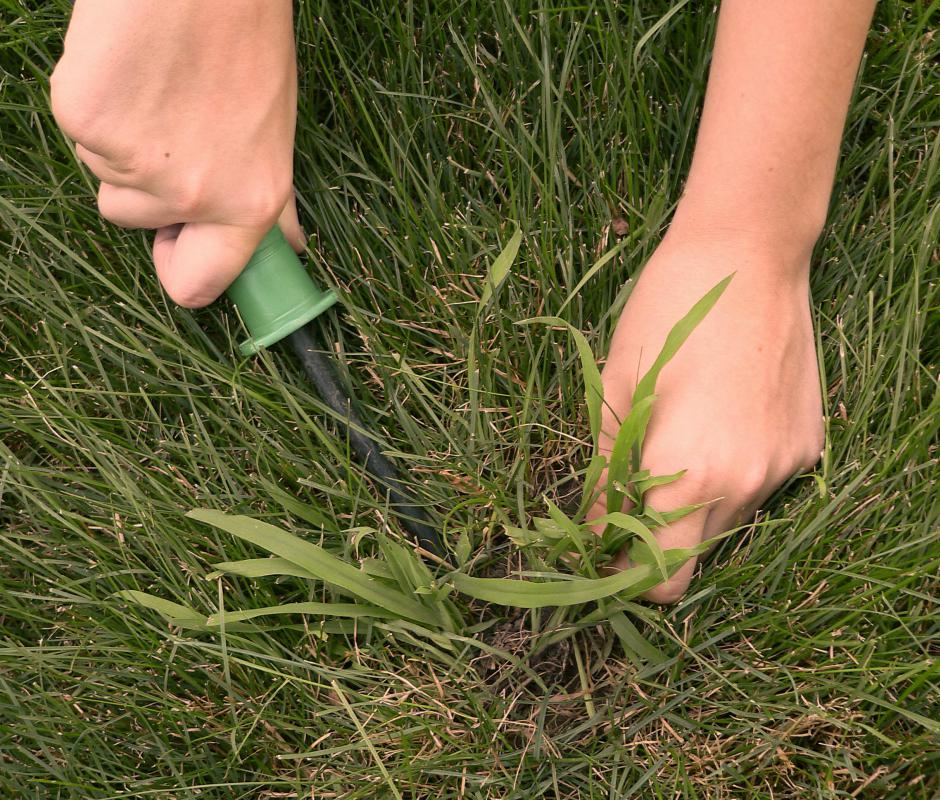At HomeQuestionsAnswered, we're committed to delivering accurate, trustworthy information. Our expert-authored content is rigorously fact-checked and sourced from credible authorities. Discover how we uphold the highest standards in providing you with reliable knowledge.
What are Some Types of Grass?
While there are several types of grass, they are generally broken down into two basic groups: cool-season grasses and warm-season grasses. Since each grass type has its own set of characteristics, both good and bad, using just one particular type of grass for your lawn may not be enough. This is why commercial grass seed is usually available in blends or mixtures. Blended grass seeds contain a variety of the same grass type while mixtures contain more than one type of grass.
Cool-season grasses are very popular types of grass. Planting time for these grasses usually takes place in fall. Bluegrass, ryegrass and fescues are some common types of cool-season grasses.

Kentucky bluegrass is one of the most common cool-season grasses. This vibrant green grass is rhizomatic and suitable for filling in bare parts of the lawn. Due to its shallow root system, however, it is not drought tolerant and requires frequent irrigation. This type of grass does not stand up well in shady areas either. As a result, most people prefer to use bluegrass blends to even out its weaknesses.

Ryegrass is a bunching grass available in annual and perennial varieties, both of which are used to overseed warm-season grasses. They germinate quickly, are generally heat tolerant and withstand wear and tear. Perennial ryegrass is darker green than the annual variety.
Tall Fescues, like bluegrass, spreads through rhizomes. Fescues withstand heavy traffic areas and are resistant to drought and most disease or pest problems. Tall fescues also stay green for much of the year.

Fine Fescues remains green year round. This grass type includes creeping red, chewings and hard fescues. They are tolerant of cold and drought conditions; however, they don’t stand up well to regular wear and tear. They are good candidates for shady locations.
Warm-season grasses are tougher than cool-season grasses. As the name would suggest, they thrive in the heat, but be warned, they turn brown once cooler weather arrives. Warm-season grasses are usually planted in the spring and include popular varieties such as Bermuda grass, zoysia grass, St. Augustine, and centipede grass. It also includes the aggressive annual weed called crabgrass.
Bermuda grass is most commonly seen in high traffic areas. It has an extensive root system, making it drought tolerant and even aggressive.

Zoysia grass is another heat and drought tolerant variety; but, during periods of drought, it will turn yellow. It is also susceptible to developing thatch and other disease problems. One of the more popular varieties of Zoysia grass is Korean lawn grass, which is coarser and better used as a groundcover. It is also a seeded variety, whereas most Zoysia grasses are often applied in plugs.
St. Augustine grass holds up well to heavy traffic and is suited for moist, humid conditions. This grass does not tolerate cold and is susceptible to fungus problems. It is also typically available in plugs or sod.
Centipede grass is best used in sandy soils. It is pest resistant and tolerates some shade. The downside of this type of grass is its inability to withstand fluctuating temperatures.
Crabgrass varieties are mat-forming types of grass that can be extremely difficult to get rid of. Although they are tolerant of dry, hot and compacted soils, most people do not want this “weed” growing in the lawn.
In addition to these grasses, there are also synthetic grasses or artificial grass. These types of grass are very green and commonly used in places such as golf greens. The manufacture of artificial grass, however, has come a long way. Rather real looking products are being made, making artificial an increasingly, albeit not common, choice by homeowners for their lawns.
AS FEATURED ON:
AS FEATURED ON:














Discussion Comments
@bear78-- No, they are not the same, they belong to different to different genuses. Moreover, they both have subcategories. There are several different types of bluegrass for example and the Kentucky bluegrass is the most well know. There are also different types of bluestem grass like little, big and sand bluestem.
I guess the only commonalities between them are the fact that they are both native to the US and both can be used by grazing livestock.
Are bluestem grass and bluegrass the same?
Some grasses look more like a plant than a grass, like tiger grass that's native to Asia. It's a warm season grass with large, long leaves and flowers. It resembles a bamboo plant. It grows so large that it can be used as a fence and in Asia, it's mostly used to make brooms. It's not particularly well known in US but can be grown easily in the Southern states since the grass prefers hot temperatures.
Post your comments